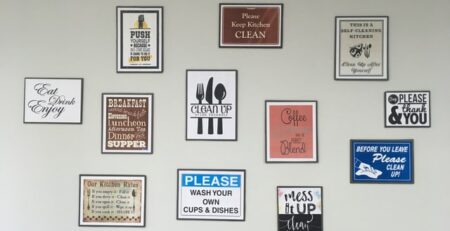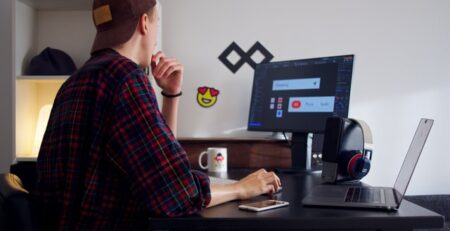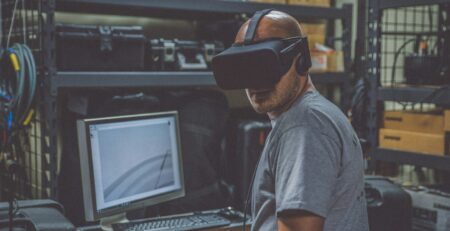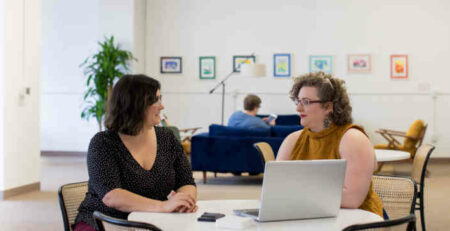Careers In Education For UX Designers, Developers, & Other Creatives
Becoming a teacher or professor isn’t the only way to get a career in education. For creatives with experience working on digital products and services, ed tech jobs offer some of the most promising career paths out there.
The recent rise in remote digital educational products isn’t solely due to the worldwide health crisis. Before 2019, advances in technology were spurring on more distance learning. Technology such as smartboards and VR are also being used more frequently in traditional in-person classrooms as well.
Tons of companies are producing solutions for learning institutions. Creatives are in high demand to help make the user experience of these products as appealing as possible for students, teachers, and institutional admins. Find out what kind of jobs for creatives exist in education with our full guide below.
The Scope Of Education In The 2020s
Even without the upheavals of the two preceding decades, education radically changed from what it was at the end of the 20th century. Although correspondence courses where students could receive information by mail and later expanded to include radio and television, these courses were simply no comparison to what was going on in full degree courses at universities and colleges.
The subject matter was more limited and practical. That all started to change when the internet made rapid communication and digital word processing fast enough for remote learning to take off in the 1990s. By the early 2000s, webcams were being sold by many manufacturers. Once everyone had them built into their laptops and phones, online lectures could become participatory.
As you can see, expansion in education (and especially in remote learning) continues apace with technological progress. The massive headway made toward the internet of things and in related fields like wearable tech and virtual reality has created room for learning to develop in new directions.
Core pedagogical concepts such as conceptualization, contextualization, and scaffolding learning blocks haven’t changed. Now it’s up to UX designers and other creatives to fully understand these pedagogical principles so that they can build great learning experiences.

The Rise Of EdTech
Educational technology, commonly referred to as EdTech, has generally been a good way behind consumer technology. That makes it hard for schools to keep up with what kids have at home. So even when they try to include multimedia in their lesson plans, holding students’ interest is a real challenge.
Old resources don’t load as well and they just don’t feel like a real part of regular life for students who are used to the sleek and appealing design of apps and websites like YouTube, TikTok, and Instagram.
That’s been the central challenge for EdTech for years. Although they were doing reasonably well back in the CD-ROM days, companies manufacturing lagged when the internet age entered maturity.
And now that growth has continued. If there’s one thing the unprecedented events of 2019 impacted favorably, it was the attention they brought to the woeful state of distance learning resources when classrooms all over the world were forced to go online indefinitely with no prior notice.
Lack of access to resources was a large part of the problem for many people in poorer and more rural regions. Compounding that part of the issue was the fact that many EdTech resources weren’t streamlined – whatever equipment they were being run on, they were performing poorly and taking up too much memory in the process.
When they weren’t, it usually meant they had such limited functionality that they weren’t worth much even running at full speed. That’s not to say that all educational technology products before a few years ago weren’t valuable and useful in many ways, but it does help explain why EdTech jobs are in such high demand right now.
They have a lot to fix but they also have tons of fresh opportunities. For students of all ages, EdTech that reaches the functional level of consumer apps and websites not only entertains students better, but also prepares them for their future careers with relevant technical skills.
Expanding Access With Educational Technology
By far one of the greatest benefits of modern EdTech is that it enables remote learners to get closer to the same experience they would get with in-person learning.
Creatives looking to score EdTech jobs need to keep this central principle in mind. From pedagogical professionals to the World Bank, tons of organizations and experts are harping on the potential of EdTech for expanding access to education and the pressing need to make sure it can accomplish that goal.
There is certainly more than one field where creatives can put their efforts toward this admirable goal. It’s not only kids who live in remote areas, on army bases, or in unique living situations that need this. Kids with a greater learning curve can use EdTech to study at their own pace so they don’t fall behind their peers.
Here’s a small list of examples of EdTech programs that have allowed more students to study more flexibly than they ever could before.
- Duolingo
For anyone who has studied a foreign language, Duolingo is more than likely a familiar name. According to the site, they’ve helped 500 million people learn foreign languages, including over 50 million current monthly active users.
To accomplish that kind of reach, you need some serious creative power. And you can tell they’ve paid attention to their users over the years, incorporating forum comment functions, social networking, and regularly updated lessons to keep learners from feeling like that platform is getting stale.
- Khan Academy
Khan Academy is a big name in the kind of EdTech that helps kids get through the education that’s required of them, as opposed to elective programs like Duolingo.
Their goal is a very respectable one. KA is trying to get digital tools that help personalize education into the hands of the kids who need it most. Teachers and parents can also sign children up for the service, which is available for free in keeping with the Khan Academy’s mission.
The courses offered mimic the typical K-14 curriculum, including AP courses and test prep for the ACT and SAT, among many other things.
- Oppia
Another great example of the heights EdTech can reach with the right minds behind it, Oppia offers a platform for creating courses and studying aids. They’ve taken care to make their service functional at low internet bandwidths and they also have a few other cool features like translating their material into local dialects.
It’s a highly customizable platform that makes it easy for teachers to navigate the jump to digital and internet services. Oppia gives guidelines for creating lesson plans to make sure everything is as effective as possible.
- Code It!
Perhaps one of the coolest EdTech platforms, Code It! Provides fun and engaging material for kids to learn how to make their own games and animations. Not only is it a clever way to get them familiar with using computers, but it also thrills many children to learn that they can make digital products themselves.
Schools and individual parents can start their kids on the site from the age of nine. It makes it easy to prepare the kids for the almost certain eventuality that they will be dealing with more complex digital tools than we had to learn much earlier than we thought.
- CK-12
Textbook and flashcard tools for STEM teachers are the main products of CK-12, which advertises itself as a free assistant for every teacher. The stats provided by CK-12 are really useful in helping instructors find patterns in students’ work at the class level.
They offer fully customizable online textbooks, adaptive learning, simulations, webinars, a discussion forum, and much more. If you want to see the current state of EdTech as it’s widely used by students currently, CK-12 is a good place to look.
How Does Design Thinking Work In EdTech?
As you can see from the examples above, there’s no limit to what educational technology can offer for students, teachers, admin, and parents. It is also worth pointing out that there are a lot of stakeholders to consider, perhaps more than you’d find on a typical project.
While they do all share the same goal of educating the pupil, there are still competing interests. Parents prioritize learning while children might think entertainment and captivating lessons matter most. Teachers want to incorporate as many real-life tools and concepts as possible while principals and other admin workers must honor budgets that often limit what teachers are left to work with.
A variety of stakeholders with varying motivations is nothing new for the design thinking process. But UX designers and other creatives working in education have to balance these competing interests in a slightly different way than you normally would with business.
Many creatives love working in education because the business side of things is less up-front than it is when you’re working for a typical company. Of course, there are still business concerns that have to be incorporated into the project when you’re working in EdTech – these products are still made by companies for the most part.
Some products are made by non-profits. Working in the non-profit sector requires a slightly different UX approach that many creatives enjoy and prefer to private sector work.
Desirability and accessibility are extremely important for education products. Whether the student is a child, teenager, or adult, they have to want to use the tools if they can expect to learn from them. Inspire lasting motivation and education levels rise, potentially creating a positive ripple effect with wide-ranging implications.
There are many ways that creatives can use design thinking and experience-driven design to make a lasting impact on EdTech and society at large. Let’s take a look at a few example jobs so you get an idea of what’s out there.
Common Jobs For Creatives In Education
1. Animator
Creatives with the skills to produce engaging animation can help make education technology tools more engaging with motion graphics, videos, and immersive games. The rise in augmented reality technology has opened up new avenues for animators. Plus, the increase in digital textbooks means graphics and charts can now be animated.
Websites like Duolingo use animation to keep students motivated. Other uses of animation in EdTech include supplemental material for online lectures, filters for augmented reality environments, and explanatory graphics that make learning fun.
2. Product Designer
The digital products we discussed earlier in this guide are just one place product designers are needed in EdTech. Despite the recent rush to distance learning, the majority of students still have in-person learning at the core of their curriculum. The physical objects used in these lessons need to keep up with the progress made in digital products and integrate with them seamlessly.
One common area of EdTech for product designers is working on building online learning platforms. These environments aim to be one-stop-shops for students in online degree programs, tutoring programs, and just about any other form of distance education.
3. UX/UI Designer
Like so many other industries, EdTech has a great need for UX/UI designers. The digital tools used for distance learning need to account for the needs and pain points of their users, as do the systems used to coordinate standardized tests like the SAT, ACT, and AP exams.
As a UX/UI designer in EdTech, you aren’t necessarily going to be working solely on apps for distance learning. The field will continue to expand as technology makes more things possible in remote classes.
4. Creative Director
The teams aiming to expand access to EdTech across the world need guidance so that their impact is consistent with their original goals. Creative directors establish the vision and organize progress so they can keep track of how successful everyone’s efforts are. They also have to interact with stakeholders and ensure everything stays under budget.
If you have experience in design and are also very organized and sociable, working as a creative director is the perfect way to put all your various skills to good use. You’ll also be part of making these new educational technology tools more familiar for people who have never used them before.
5. Copywriters
Lots of education technology tools are new to the people using them. Many students have seen their school-going days upended as school systems scrambled to adapt to online learning environments. Writing good copy helps demonstrate the strengths and advantages of EdTech while also explaining how it works to demystify it.
Plus, all the various stakeholders have to be able to understand what the goals are and what progress is being made. Copywriters aren’t always focused solely on writing text for public-facing display. Sometimes they help directors and fellow creatives communicate with decision-makers to keep everyone on the same page.
6. Game Designer
In the CD-ROM days, video games meant to teach were pretty simple. Students would mostly be keying in responses to questions surrounded by stylized animations. These days, however, technology such as augmented reality and VR have changed the game.
Motivation, cognitive load, and overall performance are all improved with game-based learning. Game designers are in charge of achieving these goals with engaging and enjoyable gaming experiences.
7. Graphic Designer
Just as they’re responsible for making appealing symbols and layouts for traditional textbooks, graphic designers also make digital textbooks and other learning tools look and function better. They’re typically part of a team that ensures the layout will work across multiple platforms so that students can learn on laptops, phones, tablets, and even on wearable tech.

Conclusion:
There are countless ways creatives can put their design thinking skills to good use in education. The push to remote learning has created a need for new learning platforms and more engaging EdTech that is more like the technology students already have at home.
Jobs in education are a bit different from those in other companies because you’re more likely to be working with nonprofits and other organizations with different business models. But creatives in education will also be helping expand access to quality learning tools that improve life for people all over the world. It’s a great way to put your creative skills to good use.












